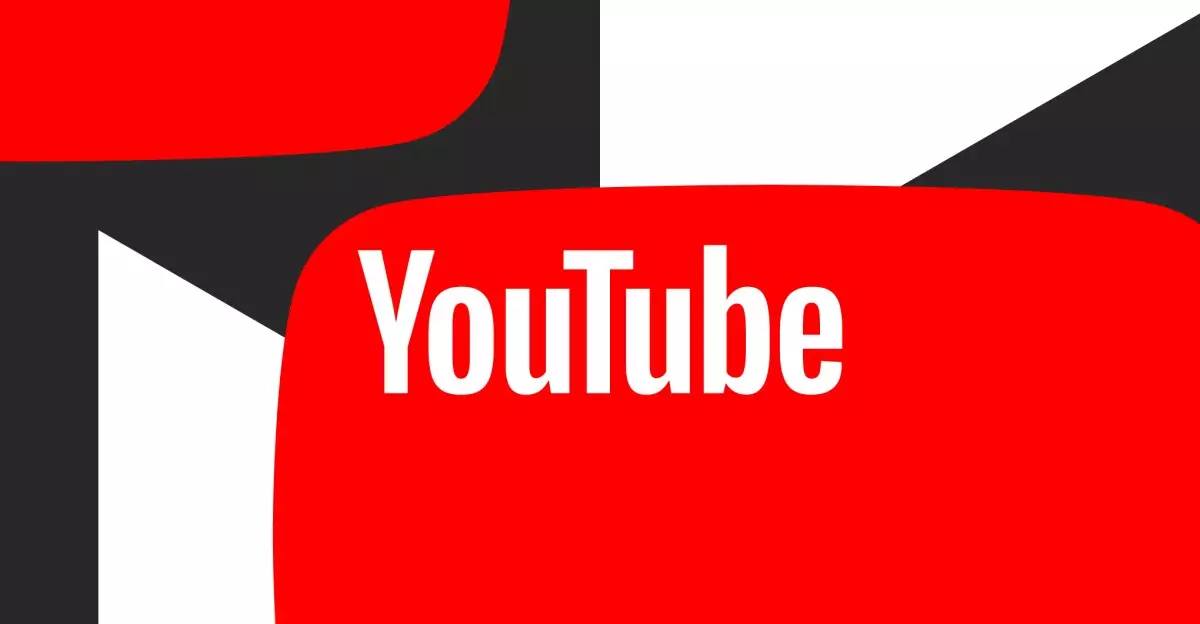In an era where digital platforms are increasingly scrutinized for their content moderation policies, YouTube has emerged with a significant pivot that aligns with the evolving landscape of free speech versus harmful content. According to a recent report by The New York Times, the platform is now allowing certain videos to remain online if the value of freedom of expression is deemed to outweigh the potential harm they could cause. This shift marks a critical juncture in YouTube’s operational philosophy, indicating a willingness to embrace a broader interpretation of what constitutes public interest.
YouTube’s revised guidelines suggest a willingness to engage with nuanced discussions that were previously sidelined. The underlying framework now allows for more extensive discussions surrounding contentious topics like race, gender, and political ideologies, provided that no more than half of the content in a video violates the platform’s established rules. This shift is particularly indicative of the tensions between upholding free speech and mitigating harm, a balance that has perplexed digital platforms for years.
Examining the Implications of Policy Changes
This new approach to content moderation not only reflects the dynamic nature of public discourse but also raises pressing questions about the responsibilities of platforms like YouTube. By diminishing the previous threshold for content violations—raising it from one-quarter to one-half of the video—a message is communicated that allows for greater latitude. This could foster an environment conducive to diverse viewpoints and healthier public discourse, but it could also create a breeding ground for misinformation.
The timing of this policy adjustment is particularly noteworthy, occurring amid critical electoral cycles and growing public scrutiny surrounding political discourse. As evidenced during Donald Trump’s presidency, platforms like YouTube adopted stricter measures against misinformation, which many viewed as essential to protecting democratic processes. However, the recent relaxation raises concerns about whether the platform is leaning too far into free expression at the expense of factual integrity, especially regarding health-related content and election narratives.
The Public Interest Dilemma
Nicole Bell, a spokesperson for YouTube, underscored that the definition of “public interest” is fluid and evolving. While this acknowledgment is commendable, it challenges the platform to articulate more clearly what that term encompasses. The risks associated with allowing potentially harmful content to circulate in the name of open discourse are considerable, particularly in areas where misinformation can lead to real harm, such as public health and safety.
Take, for instance, the example provided by the Times: a video detailing Robert F. Kennedy Jr.’s controversial views on COVID-19 vaccines that blatantly defies medical guidelines may survive moderation scrutiny due to its supposed public interest value. This case exemplifies the precarious balance YouTube must strike. While facilitating free expression is vital, permitting unverified or misleading information poses tangible dangers.
Comparison with Other Platforms
YouTube’s decision comes alongside broader trends among tech companies, such as Meta (formerly Facebook), which has recently altered its policies regarding hate speech. As companies test the waters of more lenient moderation, we must consider the long-standing implications for digital discourse. The fact that various platforms are taking similar stances in response to external pressures, including political advocacy and legal challenges, signals a defensive maneuver against potential regulatory backlash.
However, it’s worth noting that this newfound leniency could also be interpreted as a reaction to years of criticism from political figures, particularly Trump, and his supporters, who have long accused tech companies of censorship. Is it possible that in an effort to mitigate political backlash, tech giants are sacrificing the integrity of their platforms?
The Future of Digital Discourse
As YouTube navigates these choppy waters, its decisions will undoubtedly influence its user base and the broader fabric of online communication. While the platform’s intention to protect free expression is laudable, the ramifications of increased leniency in content moderation could prove challenging. The implications of this new policy could reverberate through digital discourse for years to come, with other platforms potentially following suit.
Ultimately, YouTube’s exploration of policy adjustments to balance freedom of expression with user safety may set a precedent that shapes the future of online content moderation. If platforms do not carefully consider the implications of their actions today, they risk losing the trust of their audiences and stakeholders tomorrow, complicating the ongoing debate about the role of technology in shaping societal narratives.

